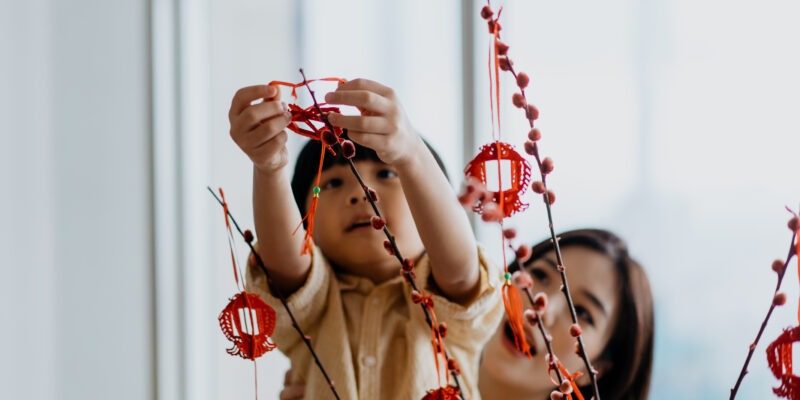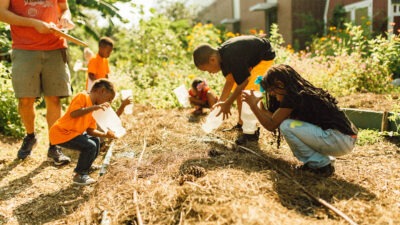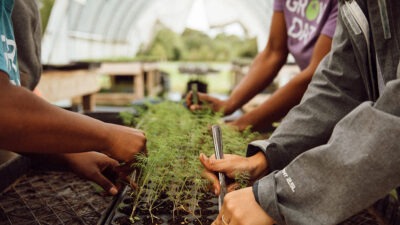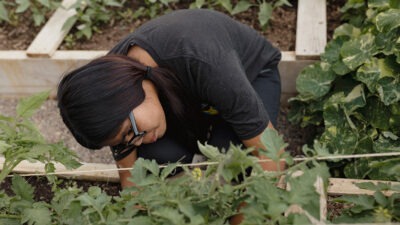Lunar New Year, often called the Spring Festival or Chinese New Year, marks the beginning of the lunar calendar and is filled with traditions that symbolize renewal, prosperity and togetherness. Each year is associated with a different zodiac animal. This year, 2025, welcomes the Year of the Snake, a symbol of wisdom, intuition and transformation.
This celebration presents a meaningful opportunity to teach children about cultural diversity, traditions and inclusion — conditions that are necessary for all children, families and communities to thrive and succeed. By exploring how different Asian cultures observe the holiday, families can also create space for conversations about representation, history and unity. If you’re looking for ways to learn about and participate in Lunar New Year festivities, start by taking cues from the community; listening and learning from them directly by participating in events they’re hosting and visiting their local businesses.
Here are additional ways to celebrate Lunar New Year to teach kids how to celebrate diversity:
Attend a local Lunar New Year celebration
Many cities across the U.S. host vibrant Lunar New Year festivals featuring parades, dragon dances and cultural performances. To find the biggest celebrations near you, refer to Only In Your State’s “Top 11 U.S. Cities to Experience Lunar New Year Festivals in 2025” and plan a visit.
Read books that celebrate cultural diversity
Introduce children to books that highlight Lunar New Year traditions and the cultures that celebrate them. This list of six books is a great starting point, with examples of how to guide children toward equity and compassion. “The Year of the Snake: Tales from the Chinese Zodiac” by Oliver Chin introduces children to the Chinese zodiac through the adventures of a young snake, while “Goldy Luck and the Three Pandas by Natasha Yim” offers a Lunar New Year twist on the classic “Goldilocks and the Three Bears.”
Cook a traditional Lunar New Year meal together
Food is a powerful way to connect with different cultures. Prepare traditional dishes such as dumplings, longevity noodles or sticky rice cakes, and discuss their symbolic meanings. Encourage children to research recipes from different countries that celebrate Lunar New Year, including China, Vietnam and Korea. For inspiration, read Food Network’s “53 Recipes for a Lunar New Year Celebration” to explore festive dishes from across Asia.
Create cultural art and crafts
Engage kids in hands-on learning by making paper lanterns, dragon masks or red envelopes to explore Lunar New Year symbols. For craft ideas, check out MSN’s “6 Crafts You Can Do With Your Kids to Celebrate Lunar New Year” for fun and meaningful projects.
Learn about the Lunar calendar and zodiac
Teach kids about the Chinese zodiac and the animal that represents the new year. Have them research their zodiac sign and its traits, then compare it with others. For an in-depth explanation of the holiday’s origins and traditions, read Courier Journal’s “What is the Lunar New Year? Everything You Need to Know from Chinese Zodiac Animals to Dates.”
Attend or Watch cultural performances
Lion dances, traditional music and storytelling are central to Lunar New Year celebrations. Watching live performances or videos online can help kids experience these traditions firsthand. Don’t miss a clip of Hong Kong’s 2025 Lunar New Year Night Parade, a dazzling showcase of floats, lively performances and colorful costumes.
Discuss the meaning of family and community
Lunar New Year emphasizes family gatherings and honoring ancestors. Encourage children to think about their own family traditions and how different cultures celebrate togetherness. Communities thrive when people listen to one another’s stories and embrace different perspectives.
Encourage acts of kindness and giving
A key Lunar New Year tradition is gifting red envelopes with money as a symbol of luck and prosperity. Use this practice to encourage children to perform acts of kindness, such as donating to a cause, helping a friend or writing a note of appreciation for a teacher or family member.
Lunar New Year offers families a meaningful way to introduce children to cultural traditions while reinforcing the values of inclusion, empathy and respect. Embracing diversity isn’t just about celebrating different holidays — it’s about fostering understanding, connection and a shared commitment to a more inclusive world so all children have the opportunity to succeed.







Comments